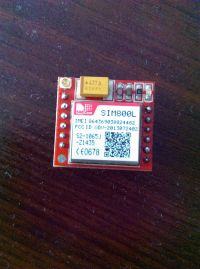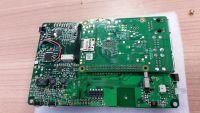Hello,
I am currently working with this module.
I will not implement the service of incoming text messages until the coming month.
Overall, the matter is quite simple:
- You connect to the module via UART with arduino with parameters 9600/8 / n / 1
- You communicate with the module using AT commands (you can find documentation on the Internet)
- The module is quite demanding in terms of power supply and how many GSM modules generate a lot of EMC / EMI / AUDIO interference around them. It requires a power supply in the range of 3.7-4.2V and an instantaneous current efficiency of 2A.
If you needed a printed circuit board to solder this system, the STM32 microcontroller would not hang on the wires, we will get along somehow. I have several laminates on sale ...
Below I present a partial diagram of my implementation and the source code as such ... I am programming the STM32L152RE microcontroller.








